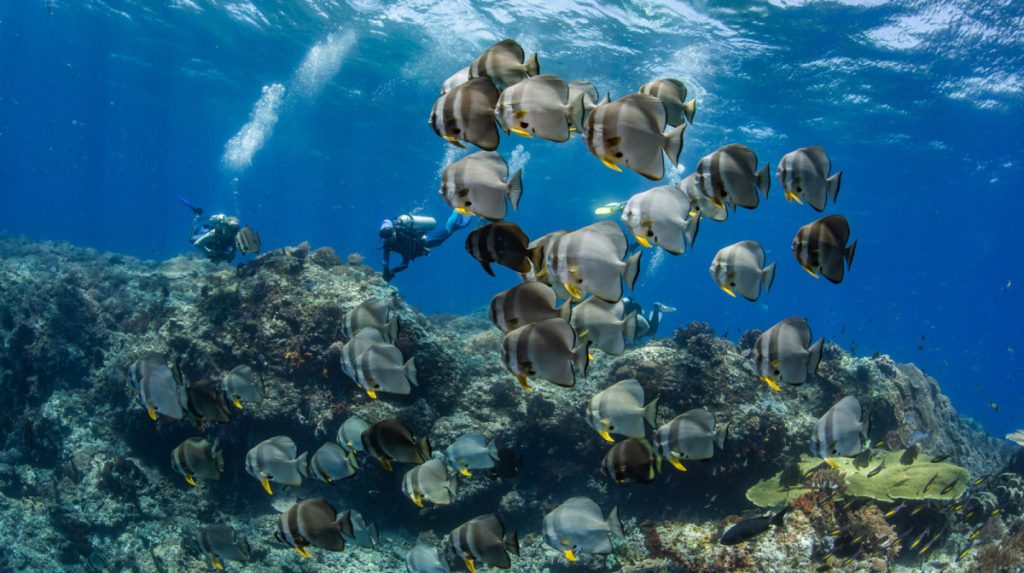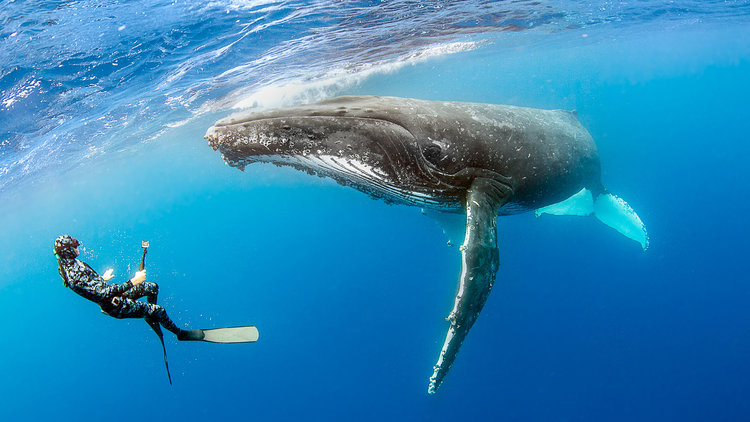Marine tourism is one of the advantages Komodo islands have many as a region with islands. One of the activities that can be done to enjoy the natural beauty beneath the sea is diving. The dive site on Komodo has many features that divers of all levels can enjoy.
There is a lot of dive site in Komodo National Park. Diving area division: north, central, and south. Sites in the east also exist, but they are considered local dive sites mostly used for dive courses.

These regions are classified according to the best time of year to dive and get the most out of it. North and Central are the best places to dive from March to October, while South is best from October to February. The dry season is best for diving in the Central and North, while the rainy season is best for diving in the South.
Batu Bolong
Batu Bolong is a small rock island. This is the most well-known dive site in Komodo National Park, arguably one of the best in the world. The typical dive strategy is to enter on the current-protected side, descend along the steep slope covered in hard corals, and be surrounded by a cloud of small fish. We then spend the rest of the dive zigzagging between the current lines, seeing more marine life than we can count, including white-tip reef sharks, large turtles, giant trevally, enormous sweetlips, Napoleon wrasse, and many more.
Manta Alley
The most popular dive site in the Komodo area, and yes, you are very likely to see Manta Rays here. Inside the bay in the far south of Komodo Island, you can see some rocky outcrops on the surface, and an “alley” 10-15meters deep between the rocks, and a deeper section to the east down to 30m. The site is easily dived more than once. Other large rays, large parrot fish, and barracuda may also be found here. There can be a strong current at this dive site, and the water is frequently chilly.
The Yellow Wall
Another awesome dive in Komodo is Yellow Wall. Located on the south side of Rinca Island, Yellow Wall is quite yellow due to the many brightly colored sea cucumbers and feather stars, making it a great place for Macro photos, but larger fish, sharks, and turtles may also pass by.
The Castle Rock
Castle Rock is located north of Komodo Island on the small island of Gili Lawa Laut. The current can be extremely powerful. Several pinnacles point upwards from a shelf at about 24 meters to a depth of about 4 meters. Some might say it resembles a castle. There are large schools of fusiliers and surgeon fish, and the abundance of smaller fish brings trevallies, jacks, mackerel, barracuda, and other species. There is even the possibility of seeing dolphins underwater. White-tip and black-tip sharks can also be found here, especially when there is a current.

The Crystal Rock
Crystal Rock is a pinnacle at low tide that breaks the surface. Only a few hundred meters from Castle Rock. The reef is home to golden and orange sponges and soft tree corals. The shallow waters are home to many anthias and damselfish, large cuttlefish, butterflyfish, hawksbill turtles, and octopus. A submerged mound rises from the bottom to 14 meters on the northwest side of Crystal Rock, separated by a 20-meter-deep gap. It’s best to dive at slack tide because the currents can be too strong, and you’ll find top schooling fish action here, including sweetlips, snappers, Giant trevally, Napoleon wrasse, and white-tip sharks.